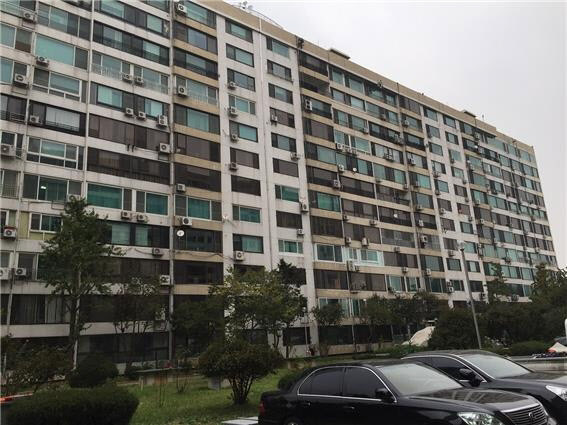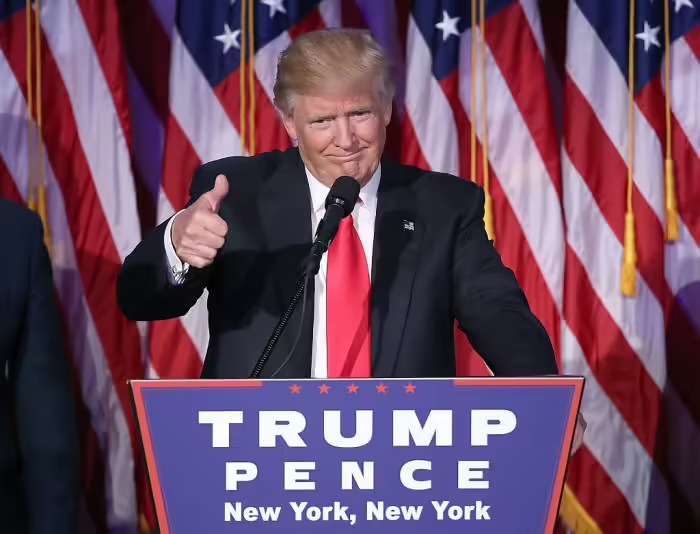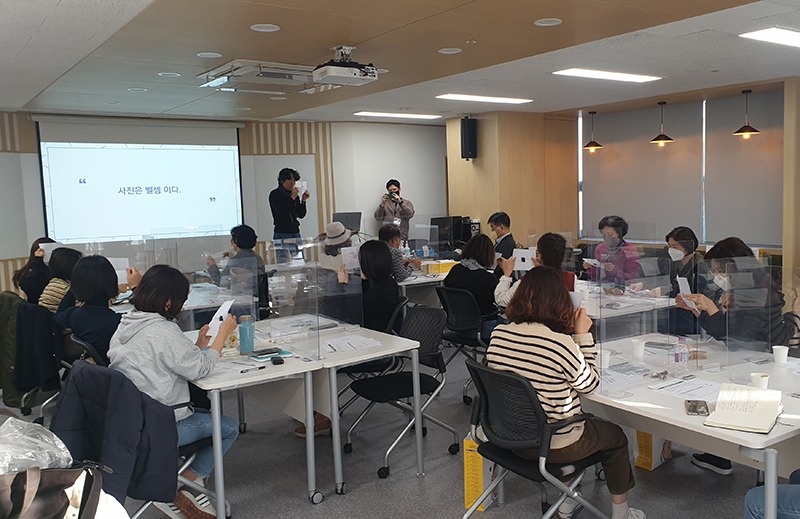[동아시아포럼] 블링컨과 옐런의 연이은 방중과 美·中 가드레일 마련의 구체화
블링컨과 옐런 장관의 중국 방문, 미중 관계 청신호 켜지나 국제정치 현실에 대한 포괄적 인식 기반으로 ‘가드레일’ 설치해야 핵심은 상대국의 주권 존중 및 현행 국제 법질서의 준수
지난 6월 토니 블링컨(Tony Blinken) 미국 국무장관의 방중(訪中)은 바이든 행정부 출범 이후 미국 외교 수장의 첫 방문으로, ‘정찰 풍선 사태’로 연기된 이후 4개월 만에 이뤄졌다. 당시 회동의 주목적은 지난해 11월 인도네시아 발리에서 열린 주요 20개국(G20) 정상회의에서 조 바이든 미국 대통령과 시진핑 중국 국가 주석이 구상해 낸 미·중 갈등의 경제적 피해 억제를 위한 ‘가드레일(안전장치)’의 구체화였다.
블링컨 장관에 이어 이달 초에는 재닛 옐런(Janet Yellen) 재무장관도 중국을 방문했다. 미국의 외교·경제 수장의 잇따른 방중은 그간 위태로웠던 미·중 관계가 회복 국면에 들어섰다는 기대를 자아내고 있다.

그간 미·중 패권 경쟁에서 바이든 행정부의 대(對)중국 전략은 주로 △국내 산업 투자 △동맹국 및 파트너와의 네트워크 형성 및 협력을 바탕으로 한 중국과의 간접적·우회적 경쟁에 방점을 뒀다. 이외에도 △민주주의 정상회의(Summit for Democracy) △QUAD(미국, 인도, 일본, 호주로 구성된 대중국 안보협의체) 및 인도태평양경제협의체(IPEF) △G7 정상회의 등 국가들과의 관계 조율을 통한 대중 봉쇄(containment) 시도 역시 미·중 관계에 다른 국가들을 포함한다는 점에서 궤를 같이하는 전략이다. 하지만 최근 미국 행정 부처 수반들의 연이은 방중은 미국이 중국과 직접적인 관계 구축을 위한 기반 마련에 나섰다는 추측을 불러일으킨다.
중국의 입장에서 ‘미·중 간 관계 단절’이라는 최악의 상황은 피하는 것이 지정학적 면에서나 국력 성장의 측면에서 이익에 부합하는 것은 확실하다. 다만 현재 미·중 간 무역 및 첨단 기술 분야의 마찰이 비단 경제적 갈등에 국한되지 않는다는 점과 미국의 각종 제재의 저변에 중국의 성장과 부상을 억제하기 위한 명확한 목적이 자리한단 사실은 미·중 관계 악화 및 디커플링(Decoupling·탈동조화)을 가속화하는 요인으로 작용하고 있다.
미·중 간 가드레일의 마련, 핵심은 대화와 상호존중
미·중 간 경쟁 격화에 따른 충돌 방지를 위해 가드레일은 패권 경쟁, 협력 기반 감소 등 정치 현실에 대한 충분한 인식을 바탕으로 구상·설치돼야 비로소 장기간 유지가 가능할 것으로 전망된다.
첫째, 대화 창구를 확보해야 한다. 진퇴양난에 처해 있는 양국의 정치적 대화는 단지 자국의 이익에만 부합하는 결과를 끌어내기 위한 감언이설로 해석되기보단 상황 개선을 위한 진정성 있는 시도로 간주돼야 한다.
이를 위해서는 상호존중을 기반으로 한 대화가 이뤄져야 한다. 자국의 이해관계만 관철하는 것을 지양하고 정치적 결정의 파급효과를 고려해야 한다는 의미다. 물론 양국은 주권 국가로서 자국의 안보 및 공익을 이유로 제재를 부과할 수 있는 권리를 가진다. 다만 2021년 5월 유럽의회의 ‘EU-중국 포괄적 투자협정(CAI)’의 비준 중단 결정과 잇따른 중국의 보복 제재가 시사하듯, 자국 중심적 사고에서 비롯된 일방적 행위는 국가 간 관계를 악화시킬 뿐만 아니라 정치적 대화와 우호 관계 유지를 사실상 불가능하게 하는 만큼 자국의 선택이 미칠 파급효과를 고려한 신중한 결정을 내려야 한다.
둘째, 상대 국가에 대한 내정 간섭은 지양하고 자국의 행동 규범을 수립 후 이를 표준 강령으로 채택해야 한다. 아울러 미·중 양국은 정치적 이데올로기의 틀에서 벗어나 지속 가능한 컨센서스를 도출해야 한다. 특히 전통적인 군대군(軍對軍) 대응 방식은 타국을 압박·간섭하는 데 특화돼 있는 만큼, 무력 충돌로 비화되지 않도록 군사 소통 채널을 새롭게 구축해야 한다. 각국의 이해관계가 복잡하게 얽혀있는 현 상황에서 양국이 만족할 만한 합의점을 도출하기 위해서는 뛰어난 외교 기술과 위기 관리 채널의 확보가 필수적이기 때문이다.
G20 정상회의의 성과와 대만 문제 해결의 실마리
셋째, 미·중 관계는 상호 간의 안정을 도모하고 견해의 간극을 좁히는 것을 기반으로 해야 한다. 앞서 지난해 발리에서 개최된 G20 정상회의에서 시진핑 국가주석은 △미국 내정에 간섭하지 않을 것 △현행 국제질서를 바꾸려 하지 않을 것 △미국을 대체하려는 시도를 하지 않을 것 등 이른바 ‘삼불(三不·3 noes)’을 약속한 바 있다. 이에 바이든도 △신냉전 체제를 추구하지 않을 것 △중국의 체제를 바꾸려 하지 않을 것 △동맹 강화를 통해 중국을 견제하지 않을 것 △대만 독립을 지지하지 않을 것 △미중 갈등을 조장하지 않을 것 등 ‘오불(五不·five noes)’로 화답했다.
이러한 상호 간 선언은 격동하는 미·중 관계에 일종의 지침 역할을 한다. 이를 통해 각국은 더 이상 상대국의 정치적 수사 저변에 숨겨진 의도를 의심하지 않고 신뢰를 기반으로 관계 개선에 집중할 수 있을 것이다. 또한 이를 공동성명으로 채택할 경우 구속력이 강화됨에 따라 미·중 간 무력 충돌 가능성도 한층 완화될 것으로 전망된다.
넷째, 상대국의 영유권을 침해하지 않음은 물론 각국의 영토 분쟁에 개입하지 않아야 한다. 1972년 리처드 닉슨 전 대통령의 첫 방중 당시 발표된 ‘상하이 코뮤니케(Communique·공동성명)’에는 양국 중 어느 측도 아시아·태평양지역에서의 패권을 추구하지 않을 것이며, 다른 나라의 패권 추구 시도에도 반대한다는 내용이 담겨 있다. 또 대만해협 양안(兩岸·중국과 대만)의 모든 중국인은 ‘하나의 중국(one china)’에 속해 있으며 대만도 중국의 일부분이라는 점을 미국이 인정하는 내용도 명시돼 있다. 그러나 지난해 미 국무부는 미국·대만 관계 현황에 관한 팩트 시트(설명 자료)에서 ‘미국은 대만의 독립을 지지하지 않는다’는 문구를 삭제하는 등 사실상 대만 편에 서서 끊임없이 개입을 시도하고 있다.
하지만 미·중 관계의 개선을 위해서는 미국이 중국 내정에 더 이상 간섭하지 않고 하나의 중국을 존중한다는 진정성이 담긴 메시지를 전달해야 한다. 중국 역시 양안 문제에 대해 무력 충돌이 없는 평화적인 해결책 모색은 물론 구체적인 통일 시한을 두지 않는다는 입장을 피력해야 한다. 특히 정찰 풍선 사건과 같이 자국의 신뢰를 갉아먹는 행위가 두 번 다시 반복돼서도 안 된다. 지난 2월 중국 정찰 풍선이 미국 영공을 침범, 미국이 전투기를 동원해 정찰 풍선을 격추하면서 미·중 관계는 급속히 냉각됐다. 다만 중국은 자국 내 인권 침해나 당국의 시장 개입 문제 등을 개선하지 않는 한 미국과 핵심적 인식 차이의 간극을 메우기는 어려울 것으로 보인다.
국제법을 기반으로 한 관계 정립
마지막으로 양국은 국제법을 기반으로 관계를 정립해야 한다. 중국은 남중국해 분쟁에 대한 헤이그 상설중재재판소(PCA·Permanent Court of Arbitration)의 중재 판정에 승복해야 하며, 미국은 서인도양 디에고 가르시아에 건설된 자국의 군기지가 영국이 모리셔스로부터 불법적으로 취득한 영토에 건설됐다는 UN 해양법 협약 제7 부속서 중재재판소 판결의 구속력을 인정해야 한다. 또한 그간 미국의 독자적 대중 무역 제재로 사실상 유명무실해진 세계무역기구(WTO)의 판정도 수용해야 한다.
미·중 관계에 대해 지속적인 장밋빛 미래를 전망하긴 어렵다. 이는 사실상 복잡한 국제 정치의 현실을 지나치게 낙관하는 것이나 마찬가지다. 오는 2024년에 실시되는 미국 대선의 결과에 따라 미·중 간 한층 더 지속 가능한 전략적 협력틀의 형성 기회가 열릴 수도 있고, 다시 극심한 패권 경쟁의 길로 접어들 수도 있다. 그러나 한 가지 분명한 것은 현 단계에선 향후 양국 협력의 향방을 결정하는 데 있어 중요한 역할을 할 가드레일을 마련하는 것이 최선의 방책이라는 점이다.
Settling robust US–China guardrails after Blinken’s and Yellen’s China visits
In June 2023, four months after a wayward surveillance balloon blew his impending visit off course, US Secretary of State Antony Blinken visited Beijing to set about erecting the ‘guardrails’ US President Joe Biden and Chinese President Xi Jinping envisaged in Bali in November 2022. He was followed in early July by Treasury Secretary Janet Yellen. The United States and China may be close to stabilising their rocky relationship — an opportunity they must not pass up. The Biden administration’s strategy on China has been to invest in domestic competitiveness, align efforts with a network of allies and partners and, harnessing these assets, compete with China. The administration has also sought to isolate China via the Summit for Democracy, Quad and Indo-Pacific Economic Framework, and through bodies such as the G7. Having incentivised or leaned on allies to chip away at their relationships with China, Washington now seeks to establish a ‘floor’ under its own working relations with Beijing. For China, forging the ‘least worst’ relationship with the United States retains value from a geopolitical and developmental standpoint, given ties could yet hurtle to the point of total breakdown. There are no illusions, though, that bilateral trade and technology frictions area mere economic matter. They are intended to suppress China’s development and rise — eliciting calls for ‘self-reliance’. US–China guardrails must be cognisant of these eroding political foundations. To be durable, they must abide by certain broad understandings. The ‘pressure valve of dialogue’ must become the ‘first and most fundamental’ guardrail on the relationship. While beneficial engagement cannot coexist with coercion, dialogue must not be construed as leverage or a favour to be bestowed. Dialogue must be based on mutual respect. Both sides are at liberty to introduce sanctions for national security or public interest reasons. Akin to the European Parliament’s suspension of ratification of the European Union–China investment agreement in May 2021 following Beijing sanctioning some EU actors, neither side should harbour the illusion that business-as-usual measures or open channels of communication can be maintained with sanctioned parties. Next, the practice of self-restraint rather than the pursuit of behaviour modification of the other must become standard order. Both Washington and Beijing must rise above their visions of ideology and sculpt a durable consensus. This includes the formation of civilian-led crisis management channels, rather than solely relying on the unsatisfactory military-to-military mechanisms. Just because the Shanghai Communique-inaugurated era of strategic cooperation has died does not axiomatically mean the United States and China are fated to succumb to conflict. An intermediate equilibrium is realisable but its authorship will require exceptional diplomatic skill. Third, US–China relations must be framed with the view to reassuring the other and narrowing differences without losing sight of the underlying challenges. In Bali, Xi had proffered ‘three noes’. China does not seek to change the existing international order, does not interfere in the United States’ internal affairs and has no intention of displacing the United States. Biden tendered ‘five noes’. The United States does not seek a new Cold War. It does not seek to change China’s system. The revitalisation of its alliances is not directed at China. It does not support Taiwanese independence. And it does not seek conflict with China. These assurances provide a ballast to steady the ship of US–China relations. It serves little purpose for either side to dwell on the underlying intentions of its counterpart’s assurances. Both sides should accept them in good faith and aspire to memorialise them in a joint communique if the opportunity arises. Fourth, both parties must endeavour to abide by the inviolability of each other’s territorial interests. Washington vowed in the Shanghai Communique that it would ‘not challenge [the Chinese] position’ that Taiwan is a part of the People’s Republic of China — even as it ‘acknowledge[d]’ but did not ‘recognise’ Taiwan to be part of China. Today, the United States relentlessly challenges that proposition, including stripping out the phrase ‘Taiwan is a part of China’ from the State Department’s fact sheet on Taiwan relations. The challenge must stop and Washington must credibly signal that its ‘one-China policy’ is not being hollowed out. For its part, Beijing must credibly signal that peaceful reunification remains on the table and that there is no specific timeline for reunification. Episodes like the balloon incident must not be repeated either. But until China’s human rights record improves and the state’s intervention in the economy is reduced, the profound perceptual gap between the two sides will not markedly narrow. Finally, both sides must anchor their relationship in settled international law. China must fully comply with the South China Sea arbitral tribunal’s award. The ruling by a Law of the Sea Annex VII-constituted tribunal that the United States’ sprawling Diego Garcia military base in the Western Indian Ocean is effectively housed on illegally occupied Mauritian territory (under British colonial administration) is also binding. Successor arrangements must be arrived at with due regard for Mauritius’ sovereignty. World Trade Organization rulings must be honoured too. The international trading order is, after all, part of the ‘rules-based order’. Prospects for sustained progress in US–China relations may be modest in the near term. Depending on the result of the 2024 US presidential election, an opportunity to craft a more durable strategic framework might open up. To seize that opportunity, much hinges on getting the guardrails right at the present time. 원문의 저자는 미국 중미연구센터의 수랍 굽타(Sourabh Gupta) 수석 연구원입니다.




























